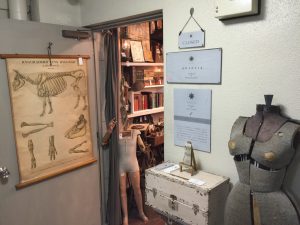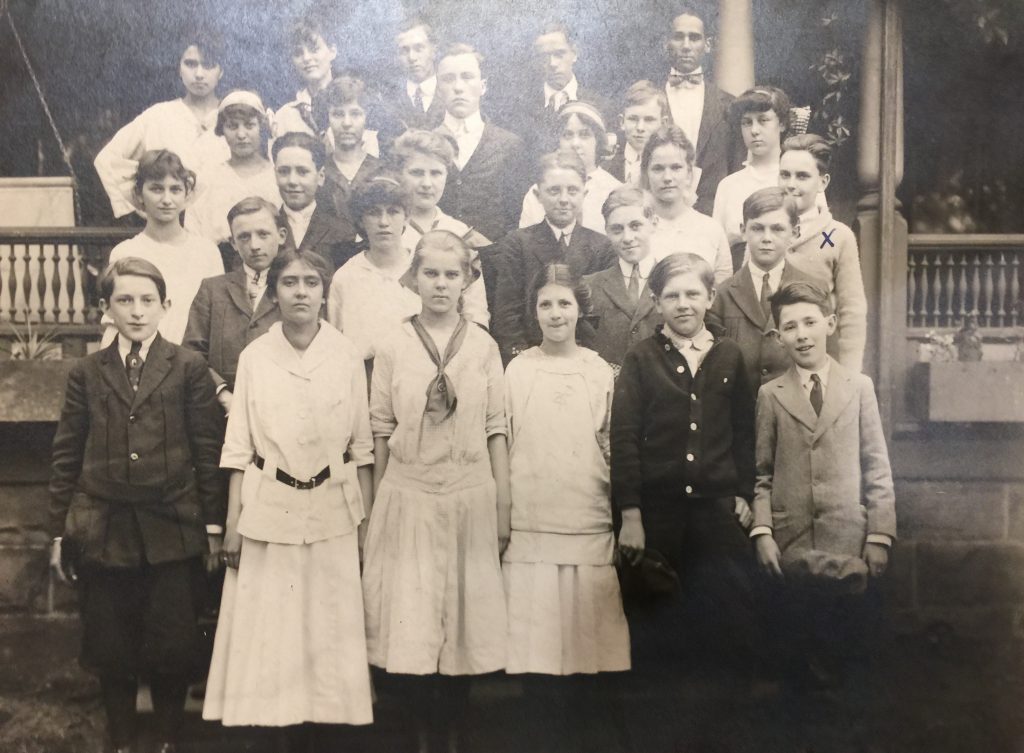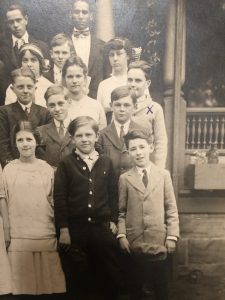On this site you can find over 9,000 digitised images, but one key thing lost in this mode of presentation is their existence as physical objects. The social lives of our photographs took many forms: they are given as gifts, exchanged, bought, collected, arranged in albums or otherwise preserved. They were sent as keepsakes, or as evidence, posted home to convey stories of success, or as memorials of loss – not least the photographs we have of tombstones in foreign cemeteries. (We have more of these than photographs of the cemeteries themselves). Without their survival as physical items, lodged on bookshelves or in trunks after being carted back from China, we would not have the opportunity to digitize the 9,000, allowing them to commence new journeys online. How we might adequately convey some of these stories has been a concern since the project started (and we have always copied every page of every album, so that we can in future reconstruct them as objects) but for now we have concentrated on conserving them digitally and disseminating individual images.
 I was reminded of this by a chance encounter in a Tokyo lifestyle store. Notoria is a tiny outlet, on the fourth floor of a nondescript block near Shibuya station, downstairs from a related business, the clothes boutique Grimoire, whose style it matches. The shop’s aesthetic that can only be described as early Edwardian clutter: ‘Antique and Installation’ is its tag-line, and it is chock-full of antiques, mostly sourced overseas: old books, suitcases and trunks, bell jars, prints, stags heads with antlers, and the like, and photographs. It reminded me too of a store I encountered near a Buddhist temple in a Xiamen back-street once, which was stocked with the contents – as far as I could tell – of an antique shop from somewhere near Guildford, in Surrey. Every so often, I was told, the owners ship in a container load of material from Britain, and here it was, on sale for Xiamen’s style-minded urbanites.
I was reminded of this by a chance encounter in a Tokyo lifestyle store. Notoria is a tiny outlet, on the fourth floor of a nondescript block near Shibuya station, downstairs from a related business, the clothes boutique Grimoire, whose style it matches. The shop’s aesthetic that can only be described as early Edwardian clutter: ‘Antique and Installation’ is its tag-line, and it is chock-full of antiques, mostly sourced overseas: old books, suitcases and trunks, bell jars, prints, stags heads with antlers, and the like, and photographs. It reminded me too of a store I encountered near a Buddhist temple in a Xiamen back-street once, which was stocked with the contents – as far as I could tell – of an antique shop from somewhere near Guildford, in Surrey. Every so often, I was told, the owners ship in a container load of material from Britain, and here it was, on sale for Xiamen’s style-minded urbanites.
 At Notoria, it seemed, the last shipment had come from somewhere around Cleveland, Ohio, or at least had some sort of Cleveland connection. For that was a place name that recurred on many of the photographs, or was written on the elementary school exercise books and spelling blanks that were having an unusual after-life in Japan. On top of one bundle of photographs was a portrait of a school group from perhaps around 1910. A cross marked one of the children, and on the back was written ‘Seventh Grade at Bolton School. Frank Strawn’, and then someone had added, ‘with X’.
At Notoria, it seemed, the last shipment had come from somewhere around Cleveland, Ohio, or at least had some sort of Cleveland connection. For that was a place name that recurred on many of the photographs, or was written on the elementary school exercise books and spelling blanks that were having an unusual after-life in Japan. On top of one bundle of photographs was a portrait of a school group from perhaps around 1910. A cross marked one of the children, and on the back was written ‘Seventh Grade at Bolton School. Frank Strawn’, and then someone had added, ‘with X’.

Seventh Grade, Bolton School, Cleveland, Ohio c.1913/14
 A little research showed that X marked Frank Brookland Strawn, born in October 1901, in Cleveland, the son of a prosperous jeweller. He would eventually follow in his father’s footsteps, and managed a jewellery shop with one of his brothers. Strawn married in Ohio in 1928, but by the 1930 census was living in California, occupation ‘None’. There is a tale in here of the crash of 1929, and then Strawn re-emerges as a salesman, living in a then still rural Van Nuys, in the San Fernando Valley northwest of Los Angeles. A 1959 news item describes him as a rancher of 25 years standing in Van Nuys. A much-syndicated photograph five years earlier, shows him with some of the 342 miniature pipes that he collected. This is much, much more, than we can offer by way of information for many of our own photographs which, typically, come with no information at all.
A little research showed that X marked Frank Brookland Strawn, born in October 1901, in Cleveland, the son of a prosperous jeweller. He would eventually follow in his father’s footsteps, and managed a jewellery shop with one of his brothers. Strawn married in Ohio in 1928, but by the 1930 census was living in California, occupation ‘None’. There is a tale in here of the crash of 1929, and then Strawn re-emerges as a salesman, living in a then still rural Van Nuys, in the San Fernando Valley northwest of Los Angeles. A 1959 news item describes him as a rancher of 25 years standing in Van Nuys. A much-syndicated photograph five years earlier, shows him with some of the 342 miniature pipes that he collected. This is much, much more, than we can offer by way of information for many of our own photographs which, typically, come with no information at all.
Frank Brookland Strawn died in Los Angeles in January 1983, and yet his school class photograph sits today in a Japanese lifestyle store in Shibuya. Asian objects have for centuries travelled to Europe and to the United States, and an Oriental chic has from time to time been all the fashion. (Sarah Cheang has recently written nicely about this). Now antiques ship the other way. The encounter also brought to mind an 1890 article in Shanghai’s North China Herald that warned readers that some local photograph shops were selling lucky bags of cartes des visites of foreigners, and suggesting they be careful about who they patronized if they did not want to find themselves in Chinese hands. Frank Strawn had no such opportunity, but his appearance aged about 13 in a trendy Shibuya store reminds us of the life of photographs as things, and as things that can travel globally.
Photographs, as objects, move. I have myself bought handfuls of photographs in flea markets in Moscow and Lyon, and in Surrey and in Shanghai – and in Xiamen – and our project has received material from families in Australia, Canada the United States, and from China, as well as from across Britain. This time I left Frank Strawn to his afterlife in Japan, and his photograph to whatever new adventure that would befall it, one divorced forever – unless someone in the future rehearses this search across family history websites — of any information other than the fact that X marks a boy in Bolton School’s Seventh Grade.

